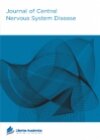


 Alexander Rotenberg
Alexander Rotenberg
Dr. Alexander Rotenberg is a neurologist and epileptologist at Boston Children's Hospital, Harvard Medical School. He was born in Chernovtsy, Ukraine. He is a graduate of Johns Hopkins University (BA) and the State University of New York, Downstate Medical Center (MD, PhD). He completed residency (Neurology) and fellowship (Epilepsy and Clinical Neurophysiology) training in Boston Children's Hospital.
Dr. Rotenberg is an active member of the American Epilepsy Society, where he is on the scientific review committee. His laboratory's major focus is on the development of novel methods to treat brain injury, particularly the type of brain injury that leads to epilepsy. He divides his time between clinical care and translational neuroscience research focused on the identification of mechanisms by which noninvasive brain stimulation can stop or prevent seizures. In particular, the Rotenberg Lab is developing applications of transcranial magnetic stimulation (TMS) and transcranial direct current stimulation (tDCS), two techniques with the capacity to safely induce durable changes in neuronal activity.
To characterize the cellular mechanisms by which TMS and tDCS exert their effect, and ultimately to optimize their clinical efficacy, the Rotenberg Lab adapted these techniques to rat epilepsy models, including a model of traumatic brain injury (TBI) and posttraumatic epilepsy. More recently, to determine how best to match the cellular changes induced by noninvasive brain stimulation to those of brain injury and epilepsy, Dr. Rotenberg has investigated the molecular changes associated with TBI in rats. A second major focus has grown out of this work: testing novel pharmaceutical approaches to prevent brain injury and seizures after TBI.
In addition to his laboratory experiments, Dr. Rotenberg heads clinical projects aimed to further develop techniques for noninvasive brain stimulation, particularly TMS, as diagnostic and therapeutic tools in child neurology.
The Role of the Editor in Chief
The editor in chief is responsible for editorial decision-making on papers submitted to the journal. The editor in chief is also responsible for editorial matters that include but are not limited to journal supplements, the journal's aims and scope, the editorial board and volunteer peer reviewer pool, editorial assessment of video abstracts, assignment to published papers of endorsements, and for consulting on pre-submission inquiries from authors.
This is my first experience working with the journal and it has been the easiest publication process that I can imagine. The links sent make login simple. The revisions are made so quickly. The decisions are made rapidly. We will definitely be working with this journal again.
Facebook Google+ Twitter
Pinterest Tumblr YouTube